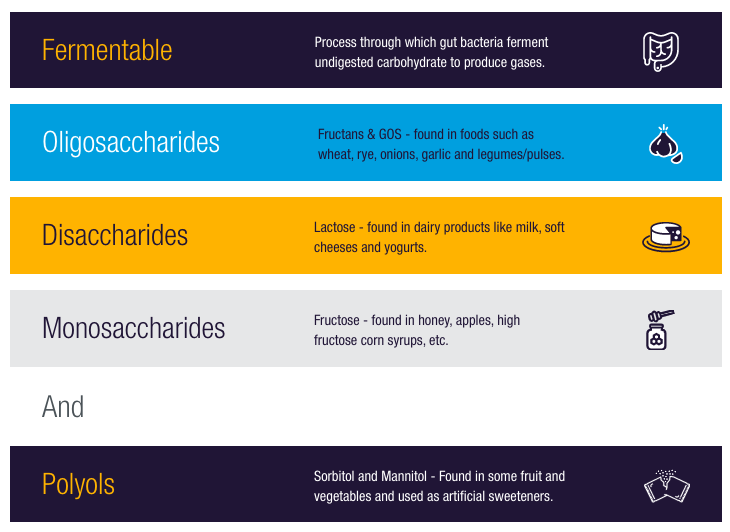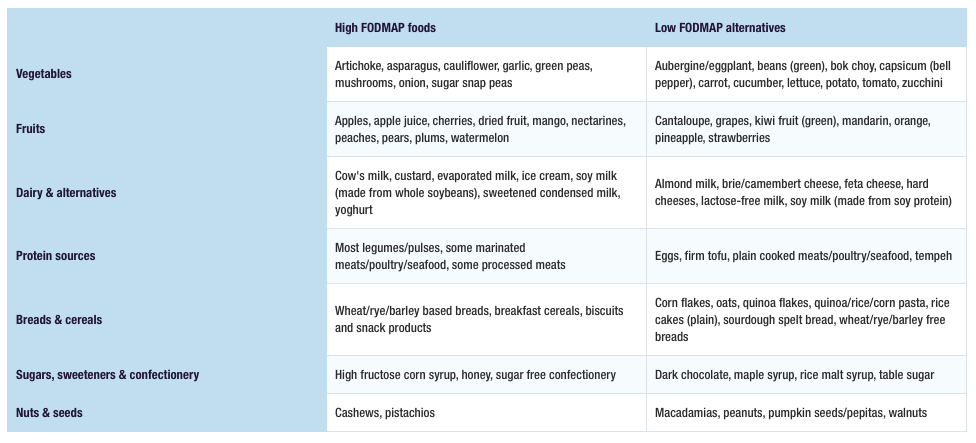FODMAPs and Celiac Disease
While most patients with celiac disease see their symptoms improve while on a gluten-free diet, up to a quarter of adults have persistent gastrointestinal symptoms, despite strict diet adherence and complete intestinal healing. This may be explained by the overlap of symptoms between celiac disease and irritable bowel syndrome (IBS), which include pain and discomfort, bloating, and diarrhea and constipation. Studies have shown that a low FODMAP diet may be an effective treatment for celiac patients who continue to experience IBS-like symptoms. 1,2
What Are FODMAPs?
FODMAPs, which stands for Fermentable, Oligosaccharides, Disaccharides, Monosaccharides, & Polyols, are a group of sugars that are unable to be completely digested or absorbed in our intestines. As they pass through the digestive system, FODMAPs move very slowly, attract water, and are fermented by gut bacteria, causing gas in the large intestine. This extra gas and water causes pain and discomfort in the intestinal walls.
What Happens When You Eat FODMAPs?
When FODMAPs are consumed, they move slowly through the small intestine, attracting water. When they reach the large intestine, gut bacteria use the FODMAPs as a fuel source to survive. The bacteria rapidly ferment FODMAPs, producing gas as a result.
These events occur in all people (i.e. people with and without IBS). The difference is that people with IBS can have problems with motility (the speed at which contents move through the intestines) and/or a highly sensitive gut wall. The extra water and gas in the intestines causes the intestinal wall to stretch and expand and results in common IBS symptoms such as pain, excessive gas, bloating, distension, and altered bowel habit (diarrhea, constipation, or both).
Where Are FODMAPs Found?
FODMAPs can be found in a large variety of foods, such as fruits, vegetables, breads, cereals, nuts, legumes, and sweets or candy. Careful laboratory analysis is needed to understand the FODMAP content of food. The team at Monash University is skilled at measuring the FODMAP content of foods, and they distribute this information using their mobile phone app, the Monash University FODMAP Diet App. The app uses a simple traffic light rating system to indicate whether foods are low, moderate, or high in FODMAPs.
Learn more about FODMAPs and download the app here.

